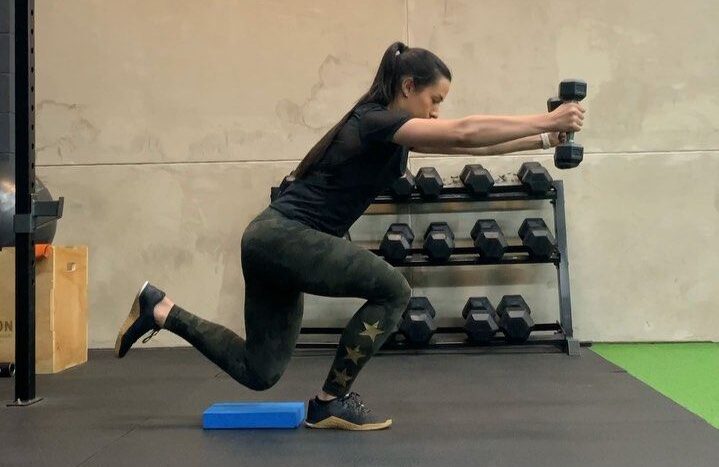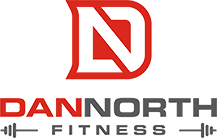
4 Strength Exercises Every Runner Should Be Doing
A lot of my clients are runners, or at least enjoy running. Some do it for sport while others do it for fun (I’ll never understand how you can actually call running “fun”…but to each their own).
Either way, all of them have the same goal: they want to run faster and longer, regardless of where they land on the athletic spectrum. And if you’re reading this, I’m willing to bet you want to do the same thing.
In terms of which strength training you should do to improve your running, it’s actually pretty simple.
Think about the last time you walked to your favourite coffee shop. Or the last time you walked upstairs. Now think about the last time you ran. What do all of these things have in common? You did all of ‘em on one leg!
You’re not a kangaroo or a rabbit. You don’t hop with both legs when you walk or run. You put one foot in front of the other (cue jingle from Santa Claus Is Comin’ to Town).
So when it comes to training to be a better runner, you need single leg strength training.

Benefits of Single Leg Strength Training for Runners
- Increased stride strength. Getting stronger on one leg means you’ll be able to apply more force into the ground per stride. Increased stride strength means more distance covered per stride. Sounds pretty good, eh?
- Ankle mobility. Many single leg exercises offer a component of ankle dorsiflexion, and help with mobility in addition to strength. Mobile, strong ankles are essential for runners given the constant demand placed on these two small areas of the body. Think about it…you’re constantly landing with your whole bodyweight on your ankles every stride you take. Single leg strength exercises strengthen the supportive muscles and tendons surrounding the ankles.
- Balance/coordination. Minimizing your base of support (i.e. standing on one foot instead of two) makes it more challenging to balance. Since you’re running with one foot at a time, your training should closely mimic this.
- Joint strength and resilience. As already noted, running is a high impact activity with great demands placed on the ankles. But it’s not just the ankles that take punishment, the knees and hips can also fall victim to running if adequate strength training isn’t incorporated to reverse it’s ongoing effects.
- Core strength. Your core is your base and center of gravity. It’s main purpose is to stabilize the spine while the outer extremities are in motion. So when it comes to running performance, core strength will allow for a rigid torso and optimal pelvic/spinal alignment while the legs and arms move to propel you forward.
- Spinal integrity. Most of the classic strength exercises are bilateral (ex. squats and deadlifts). The common limiting factor with these strength movements is the lower back. Single leg strength exercises (in general) bypass the spine and place the majority of the demand on the legs.
4 Single Leg Exercises Every Runner Should Do
K…maybe not every runner. Whether or not you can (or should) do these exercises depends largely on your training and injury history.
But with all things equal, these are some of the best strength exercises you can do to become a better runner.
1. single leg squat
No, it’s not a pistol squat (sorry CrossFitters). Think of the single leg squat as a really strict step-up.
You’ll notice in both videos I have my free leg locked while keeping all of the emphasis on my pushing leg. The biggest flaw when it comes to step-ups is “springing” up with the back leg.
The single leg squat offers little to no assistance from the non-pushing leg, which makes it a true powerhouse of a single leg strength exercise.
Note: Pushing a weight in front of you helps with counterbalance and adds some core work into the mix. You’ll see this in the following two exercises as well.
2. skater squat
I love/hate these damned things. And I think you will too.
The biggest difference between skater squats and lunges is your rear foot is elevated completely off the floor. In order to perform skater squats, tap your back knee on the floor before driving back up with your front leg.
Whether or not you’re doing the assisted or full variation, you’re going to get a great workout. I promise.
Note: The ankle weight adds a bit off counterbalance and helps “guide” you through the movement. You might find this useful if you’re first learning how to do this exercise. I personally find it really helpful when teaching clients how to perform single leg RDL’s. Speaking of which…
3. single leg rdl to reverse lunge
Probably my favourite combo exercise (especially for runners).
Rarely will you find a combo exercise (a 2-in-1 movement) that actually holds some training value without just looking cool for the sake of looking cool. The single leg RDL to reverse lunge is the real deal, friends.
You’re effectively working core stabilization, hip extension, hamstring engagement, and glute strengthening in this 2-for-1 powerhouse. This is a staple with most of the runners and athletes I train.
4. lateral lunges
Most of the classic exercises performed in the gym reside in the sagittal plane (squats, presses, biceps curls, forward/reverse lunges) , with little to no emphasis in the frontal plane (i.e. lateral or side to side movement patterns).
Whether or not you’re a runner, you need to train in different planes of movement. Running is dynamic and isn’t always straight forward on a treadmill. You need to be able to turn, transition, and catch yourself from falling at times.
Lateral lunges and other exercises performed in the frontal (side to side) plane will greatly reduce your risk of injury as a runner by developing multiplanar strength in the glutes, knees, adductors, and ankles.
Note: The band shown in the second video helps guide you down into the bottom of the lunge, while increasing the resistance as you push back up.
Summary
Single leg work is one of the most overlooked components to a great strength program for any athlete. If you’re a runner, you need more single leg strength training. If you’re not a runner, you need more single leg strength training.




